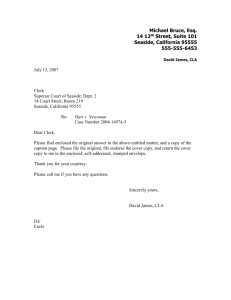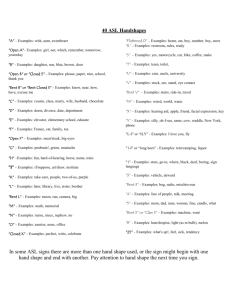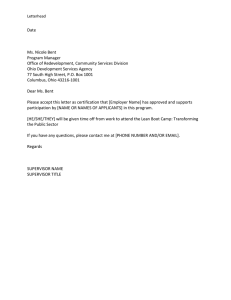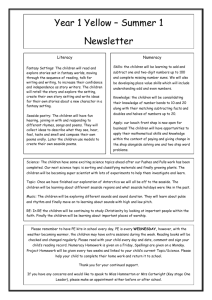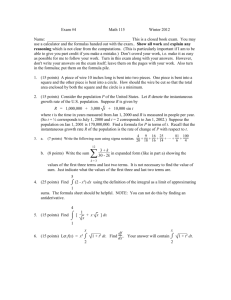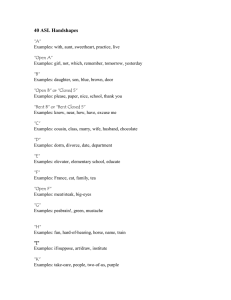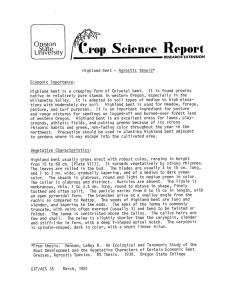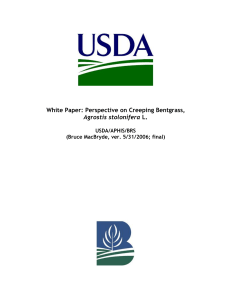Science Report rop University Staten.
advertisement
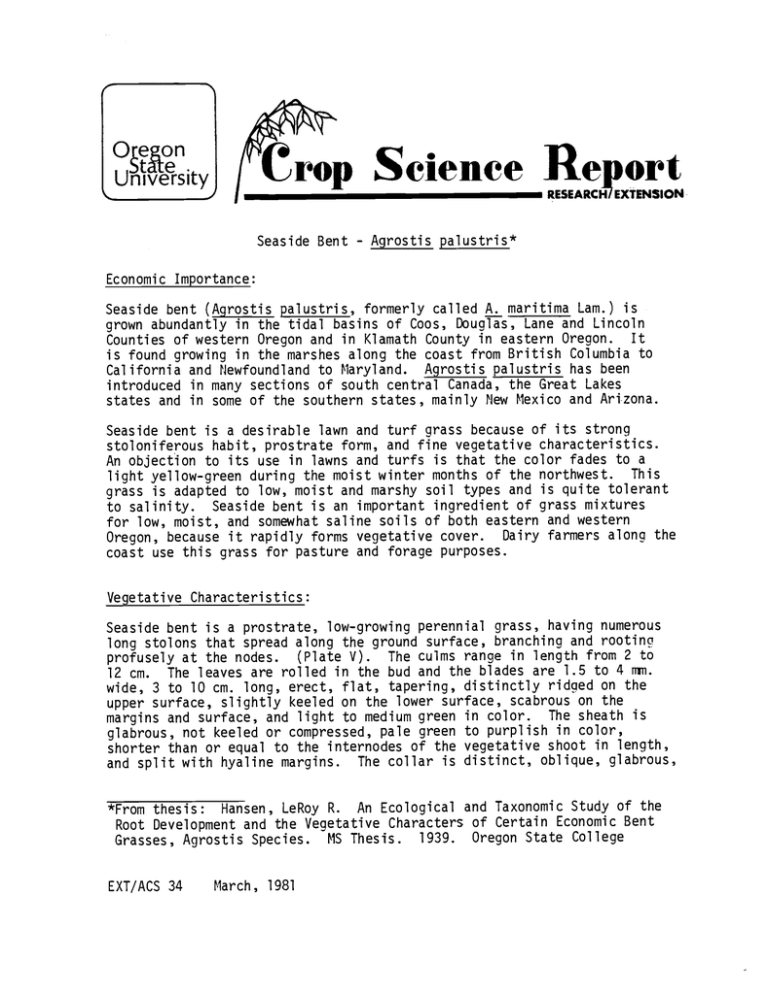
rop Science Report Staten. University RESEARCH/ EXTENSION Seaside Bent - Agrostis palustris* Economic Importance: Seaside bent (Aqrostis palustris, formerly called A. maritima Lam.) is grown abundantly in the tidal basins of Coos, Douglas, Lane and Lincoln It Counties of western Oregon and in Klamath County in eastern Oregon. is found growing in the marshes along the coast from British Columbia to Agrostis palustris has been California and Newfoundland to Maryland. introduced in many sections of south central Canada, the Great Lakes states and in some of the southern states, mainly New Mexico and Arizona. Seaside bent is a desirable lawn and turf grass because of its strong stoloniferous habit, prostrate form, and fine vegetative characteristics. An objection to its use in lawns and turfs is that the color fades to a This light yellow-green during the moist winter months of the northwest. tolerant grass is adapted to low, moist and marshy soil types and is quite Seaside bent is an important ingredient of grass mixtures to salinity. for low, moist, and somewhat saline soils of both eastern and western Dairy farmers along the Oregon, because it rapidly forms vegetative cover. coast use this grass for pasture and forage purposes. Vegetative Characteristics: Seaside bent is a prostrate, low-growing perennial grass, having numerous long stolons that spread along the ground surface, branching and rooting The culms range in length from 2 to (Plate V). profusely at the nodes. The leaves are rolled in the bud and the blades are 1.5 to 4 mm. 12 cm. wide, 3 to 10 cm. long, erect, flat, tapering, distinctly ridged on the upper surface, slightly keeled on the lower surface, scabrous on the The sheath is margins and surface, and light to medium green in color. glabrous, not keeled or compressed, pale green to purplish in color, shorter than or equal to the internodes of the vegetative shoot in length, The collar is distinct, oblique, glabrous, and split with hyaline margins. *From thesis: Hansen, LeRoy R. An Ecological and Taxonomic Study of the Root Development and the Vegetative Characters of Certain Economic Bent Oregon State College 1939. MS Thesis. Grasses, Agrostis Species. EXT/ACS 34 March, 1981 EXT/ACS 34 -2- March, 1981 The ligule is membranous, and pale green in color. Auricles are absent. thin, 1.5 to 4 mm. in length (similar to Redtop), rounded to obtuse, finely lacerate-toothed, entire or split. The panicle is from 2 to 6 cm. in length, and of a condensed form, opening at blooming season and then closing for the remainder of the season. The seeds are lanceolate to The lemmas have a slight luster, usually lighter in elliptical in shape. color than Redtop, five-veined apex predominating occasionally possess a short awn above the middle midvein commonly exerted at the apex, back usually keeled above callus, and commonly angled or constricted in "waist" like manner above the callus. The palea is sometimes short and broad, the usual longer palea forms a tapering, with the apex being obtuse, rounded The callus The callus hairs are very short and appressed. or entire. The hilum is short-linear and sometimes is has a "stuck-on" appearance. broad, forming a wedge-like shape. rQ lf4 Plate V. ",N % Seaside Bent Grass 4grostis, palustris). Plant x Nat., licule x 10, spikelet, floret, and caryopsis x 30.
